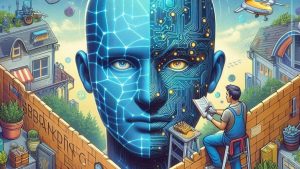
Deep learning, a subset of machine learning inspired by the human brain’s neural networks, has become the cornerstone of modern artificial intelligence. Deep learning models have powered groundbreaking advancements across industries, from image recognition and speech processing to language translation and autonomous systems.
However, as AI continues to evolve, the field of deep learning is undergoing its next major transformation. We’re entering a new frontier that goes beyond traditional neural networks and into more adaptable, efficient, and human-like models. These innovations are enhancing AI capabilities and addressing some of the biggest challenges in scalability, generalization, and ethical use.
Let’s explore the technologies and ideas shaping the future of deep learning.
Good Read: Let’s understand more about polyvinyl alcohol suppliers
- Foundation Models and Generalized Intelligence
A significant shift in deep learning is the move from task-specific to foundation models—large-scale, pre-trained models capable of performing a wide range of tasks with minimal additional training. These include OpenAI’s GPT series, Google’s PaLM, and Meta’s LLaMA.
These models are trained on vast datasets using billions of parameters and can be fine-tuned for various use cases like:
- Text generation
- Code writing
- Summarization
- Translation
- Reasoning
What makes foundation models revolutionary is their generalization. Unlike earlier models that required specific datasets for each task, these models can adapt to new tasks with few-shot or even zero-shot learning.
The Challenge Ahead:
As these models scale up, they face increased computing costs, energy consumption, and biases embedded in the training data. Future research is focused on making them more efficient, transparent, and ethical.
- Zero-Shot and Few-Shot Learning
Traditional deep learning relies on massive labeled datasets. But in the real world, such data isn’t always available. Enter zero-shot and few-shot learning.
- Zero-shot learning (ZSL): The model is trained to recognize concepts it has never seen before, relying on semantic relationships.
- Few-shot learning (FSL): The model learns new tasks with just a few examples.
These capabilities are essential for building more flexible and scalable AI systems, especially in applications like:
- Medical diagnostics with rare diseases
- Niche language translation
- Legal or financial analysis with limited case data
What’s Next:
Researchers are developing architectures that better simulate human-like generalization, enabling AI to adapt on the fly without retraining from scratch.
- Multimodal Learning: Understanding the World Like Humans
Human perception isn’t based on one mode of input—we use sight, sound, text, and touch in combination. Deep learning is moving in that direction with multimodal models.
These models combine different data types (e.g., text, images, video, audio) to deliver a more prosperous and contextual understanding. Notable examples include:
- CLIP (Contrastive Language–Image Pre-training) by OpenAI, which can associate textual descriptions with images.
- DALL·E, which generates images from text prompts.
- Flamingo and GEMINI, designed for vision-language reasoning.
This paves the way for more natural interactions between humans and machines, including:
- Voice assistants that understand context from visual cues
- Robots that learn by watching videos
- AI tutors that analyze handwriting, speech, and emotional tone simultaneously
The Future:
Expect deep learning models to become more multisensory, interacting with the physical world through robotics and augmented reality.
- Energy-Efficient and Sparse Models
Today’s deep learning models are powerful but also resource-intensive. Training large models consumes vast energy and computing power—raising concerns about sustainability and accessibility.
To address this, researchers are developing sparse models, which activate only a subset of their parameters for a given task. Instead of using all the neurons in a model, they selectively use just what’s needed.
Google’s Switch Transformer is one such model that uses sparse activation to achieve high performance at a fraction of the cost.
Another approach is quantization, where models are compressed to run on edge devices like smartphones or IoT sensors.
Looking Forward:
The future of deep learning lies in low-power, high-performance architectures that democratize access and reduce carbon footprints without sacrificing accuracy.
- Self-Supervised Learning
Labeled data is a necessity in traditional supervised learning—but it’s also a bottleneck. Labeling millions of data points is time-consuming and expensive. Enter self-supervised learning (SSL), a technique where models learn from the data structure without needing labels.
Examples:
- Learning language patterns from raw text (like GPT)
- Learning visual features from image patches (e.g., SimCLR, BYOL)
SSL allows models to learn more general-purpose representations and significantly reduces the reliance on labeled datasets.
Future Scope:
SSL is expected to be crucial in training universal AI models that can be fine-tuned across multiple industries—from healthcare to climate science—using unlabeled data.
- Neuro-Symbolic AI: Merging Logic with Learning
While deep learning excels at pattern recognition, it often struggles with reasoning, compositionality, and symbolic logic. That’s where neuro-symbolic models come in.
By combining neural networks with symbolic reasoning systems, these models bring the best of both worlds:
- Neural nets for perception (e.g., recognizing objects)
- Symbolic systems for reasoning (e.g., understanding rules or relationships)
Applications include:
- Explainable AI systems
- Legal or scientific reasoning
- Solving complex puzzles and logical queries
What’s Next:
As demand for transparent and interpretable AI grows, neuro-symbolic approaches are central to building more trustworthy models.
- Continual and Lifelong Learning
Most AI models are trained once and deployed—but they don’t “learn” in the real world. Humans, in contrast, learn continuously, adapting to new information while retaining prior knowledge.
Continual learning, also known as lifelong learning, aims to enable models to learn new tasks over time without forgetting previous ones (a problem known as “catastrophic forgetting”).
This is key for:
- Personal AI assistants that evolve with users
- Adaptive robots in dynamic environments
- Real-time anomaly detection in cybersecurity
The Frontier:
Developing architectures that support memory retention, contextual adaptation, and transfer learning at scale.
Conclusion: Deep Learning Is Only Getting Deeper
The next frontier in deep learning isn’t just about building bigger models—it’s about creating more innovative, human-like ones. The focus is shifting toward flexibility, efficiency, and general intelligence.
From self-supervised learning and multimodal perception to energy-efficient design and lifelong learning, we’re witnessing a dramatic expansion in what AI can do—and how it learns to do it.
As these models become more capable, they will automate tasks and unlock new kinds of human-machine collaboration—reshaping industries, education, creativity, and society.
The journey of deep learning is far from over. It’s only just begun

